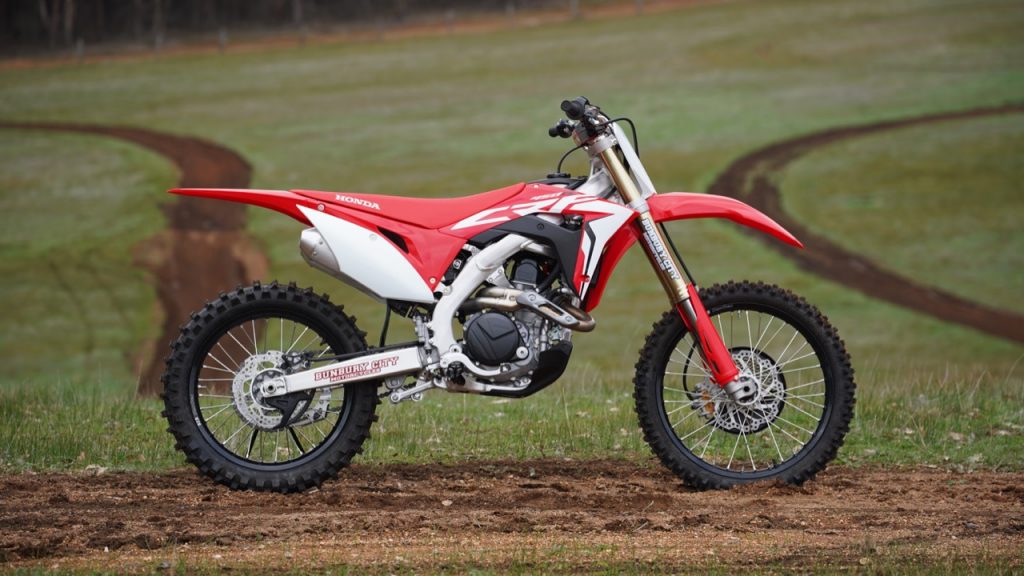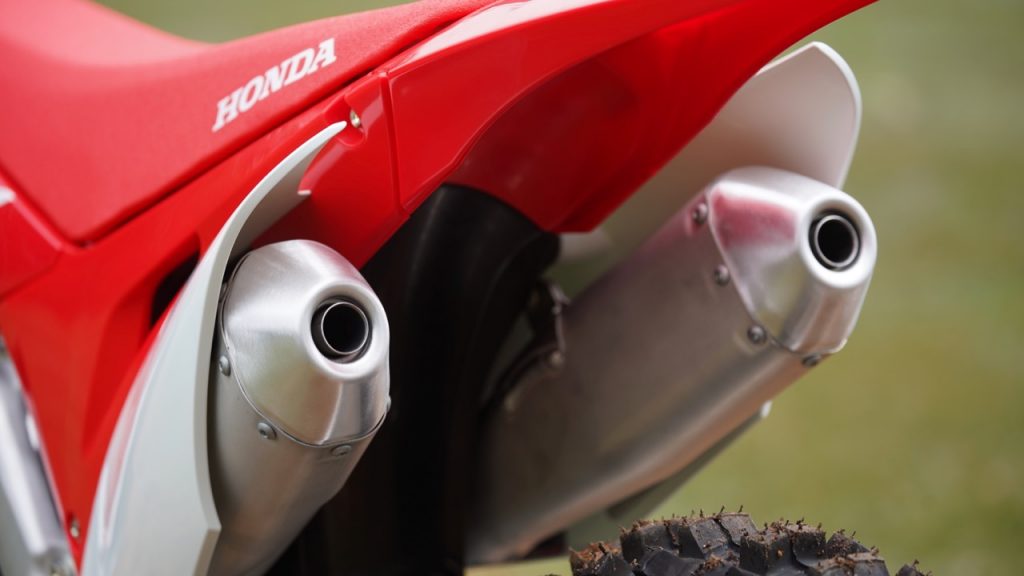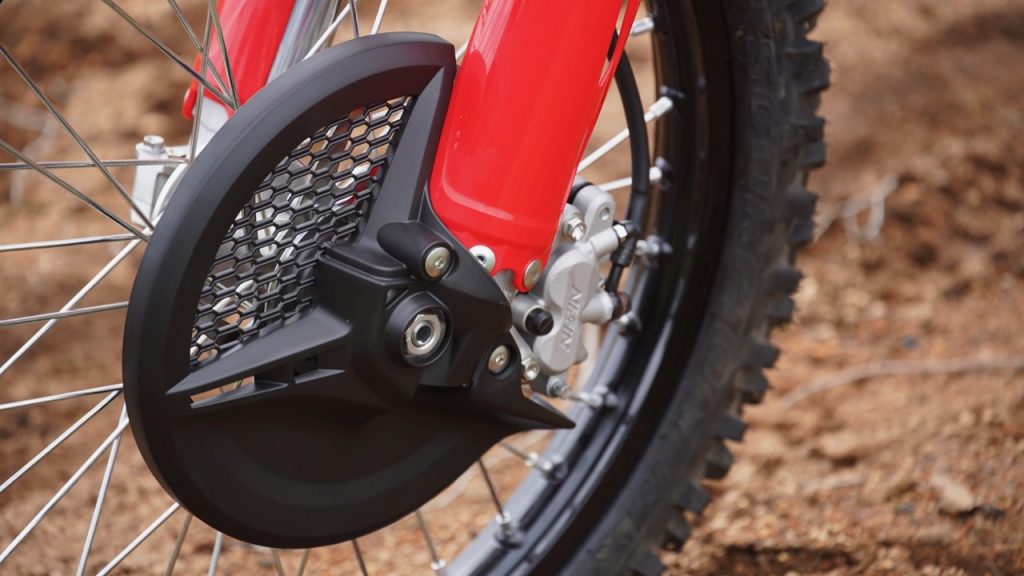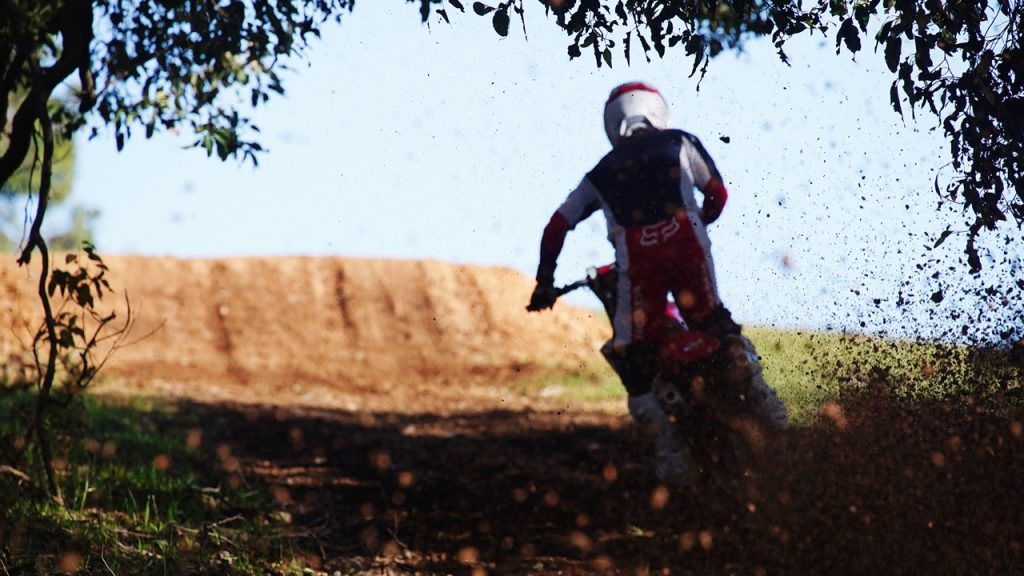As Australia awaits the 2020 Honda CRF450R, we track its changes over the last three years.
WORDS: LEE HOGAN | PICS: ADAM RIEMANN | THIS FEATURE WAS PUBLISHED IN ADB ISSUE #482
The evolution of a motocross bike is an interesting thing to track. Generally every four years the manufacturers completely revamp their MX models and then make minor changes each year in-between.
The 2019 Honda CRF450R is the third year of the bike in its current form. The 2017 was an all-new bike, with the 2018 and ’19 machines looking the same to the naked eye.
But what a lot of people didn’t realise was that the current CRF450R had all the telltale signs of a redesigned motorcycle, except in the looks department. On the track, it feels completely different to the previous two models.
2017
The introduction of the 2017 CRF450R was an exciting time for Red Riders. Visually, the bike looked impressive and it made the previous model look ancient. But it was the details that mattered.
There were some major chassis changes that included the front wheel being moved 13.1mm forward from the engine, and the swingarm being shortened to move the rear axle 23mm closer to the engine. The steering head angle was slackened to 27.2 degrees while the overall wheelbase was reduced by 7mm. The overall geometry and feel of the bike resembled the flagship 2008 model more than any in the intervening period.
The engine was the polar opposite of the 2016. With an abundance of mid-range and top-end power, the 2017 only really struggled with bottom-end torque – the only strong point of its predecessor. In Australia, it came standard with just a kickstarter, but a bolt-on starter motor could be purchased through dealers.
Visually the 2017 looked totally different to the previous model, with a much flatter profile when seated and a slimmer feeling between the legs. The move from KYB suspension and the dreaded PFS2 air fork to Showa and its 49mm spring/cartridge unit was seen as one of the biggest improvements.
Overall the 2017 was a huge step forward in the chassis/handling department, with a suspension package that was slightly on the soft side for most riders. The engine had found its missing horsepower in the mid-range and top-end but now lacked the all-important bottom-end torque that every 450 rider craved.
2018
For 2018, Honda set about fixing the niggling issues of the previous year. The first thing it decided on was to fit electric start as standard and remove the kickstarter mechanism to save some weight (but the plug where the kickstarter shaft used to be remained in the right-side casing).
The spring rates were stiffened, with the fork springs going from .48 N/m to .50 N/m. While the stock 54 N/m rear spring was upgraded to a 56 N/m. The difference was noticeable and the 2018 held up much better in the stroke.
A characteristic of the 2017 model was that the rear would squat exiting turns, when riders were hard on the gas. Unfortunately, even with the stiffer springs, this characteristic continued.
In the engine department, the 2018 model was essentially the same, with just some new mapping to clean up the power delivery off the bottom and make it a bit more friendly when lugging a taller gear. But overall, the engine still lacked the much-needed bottom-end power that the 2016 model had in spades.
Overall, the 2018 was a slightly polished version of the ’17. The wallowing rear-end of the 2017 went a long way to being fixed but the squatting characteristic continued. The CRF450R received very positive reviews and finished top-three in magazine shootouts.
The bottom-end issue would take more than an ignition upgrade to fix, and the rear-end would need more than a spring-rate change to get the red machine to reach its potential.
2019
Honda decided to make a large number of changes to this model. There were almost enough changes for it to pass as the CRF450R’s “four-yearly” overhaul and this might explain why there doesn’t seem to be much happening for next year. But, due to the CRF looking almost identical to the previous one, the 2019 managed to slip under the radar for many people.
Major engine changes included a new cylinder head with revised porting, which was targeted at fixing the bottom-end torque. The crankcase was redesigned to eliminate the kickstarter housing and this made room for the header pipes to split from one into two a lot further forward than on the previous model.
The previously matching 31.8mm middle sections increased to 35mm and 43mm. These changes produced a big increase in bottom-end torque which, combined with the cylinder head port job, made a huge difference to the overall power delivery of the CRF450R.
The clutch received a new pressure plate and lifter designed to increase oil flow to the plates while the shift sensor was changed to deliver a different ignition/fuel map for each of the five gears.
In the suspension department, Honda once again upgraded the valving specs for the Showa spring-cartridge fork. For the shock, it tweaked the valving to help the rear-end hold up. A new monoshock linkage produced more progression while the swingarm was lighter, for less rigidity.
The chassis was narrowed in the cradle and got slightly more flex. A major upgrade to the brakes saw a new front caliper fitted.
The Nissin caliper is a lighter unit that has two different-sized pistons, one being 30mm and the other 27mm. There is also an updated brake hose that resists fluid expansion.
TRACK TIME
The ’19 feels like a completely different beast to the 2017. It shares the same ergos and overall feel but the two main issues that were polished slightly for 2018 were eliminated for this year. Firstly, the bottom-end power and overall torque are now among the best in its class, with possibly just the Yamaha producing a tad more torque off the bottom.
The ’19 engine still retains its class-leading mid-range and top-end over-rev and, by doing this, it finally surpasses Honda’s epic 2008 engine. In the chassis department the company has stopped the rear squatting with the changes to the swingarm, linkage and shock valving.
Honda has almost gone too far because some riders need to stiffen up the fork a few clicks in the compression to keep the bike balanced under brakes. I ended up going in to just four clicks out from stiffest to hold the front up nicely. With the rear holding up so well under acceleration I found I could run the rear a little bit lower than on last year’s model (see breakout).
One of the most noticeable changes is the front brake. The new caliper improves braking power dramatically, to the point where the front is now at a similar level to the production units that come on the KTM and Husqvarna machines. And, for the first time in 15 years of riding Hondas, I have not needed to upgrade the standard front rotor. The stock front brake has been working flawlessly for me all year.
VERDICT
The changes that Honda made for this year have all been positive ones that have dramatically improved the 450. If I could pick one change for the rapidly-approaching 2020 model it would be some slightly firmer valving in the fork to match the impressive rear-end.
With its incredible engine, strong handling and new-found stopping power we are certainly back to the glory days of the Honda CRF450R. And Tim Gajser’s win in the MXGP championship certainly won’t hurt the development of future models.
Hogan’s set-up
SHOCK
Static Sag: 42mm
Ride height: 103mm
High-speed comp: 2 full turns out
Low-speed comp: 12 clicks out
Rebound: 10 clicks out
FORK
Compression: 4 clicks out
Rebound: 10 clicks out
Honda CRF450R
Engine
Type SOHC, four-valve
Displacement 449cc
Bore & STROKE 96mm x 62.1mm
Cooling Liquid
Compression ratio 13:5.1
Fuel metering PGM EFI
Tank capacity 6.3L
Transmission Five-speed, constant mesh
Clutch Cable, wet multiplate
Dimensions
Wheelbase 1482mm
Seat height 960mm
Ground clearance 328mm
Weight 112.3kg wet
Suspension
Front Showa 49mm spring-cartridge, 268mm travel
rear Showa gas-oil monoshock, 314mm travel
Brakes
Front Nissin twin-piston, 260mm wave disc
Rear Nissin single-piston, 240mm wave disc
Running Gear
Handlebar Renthal Fatbar tapered alloy
Front TYRE Dunlop Geomax MX3S 80/100-21
Rear TYRE Dunlop Geomax MX3S 120/80-19
Price & Contacts
THE BILL $11,999rrp
BROWSER https://motorcycles.honda.com.au/
BLOWER 1300 146 632
Warranty None






